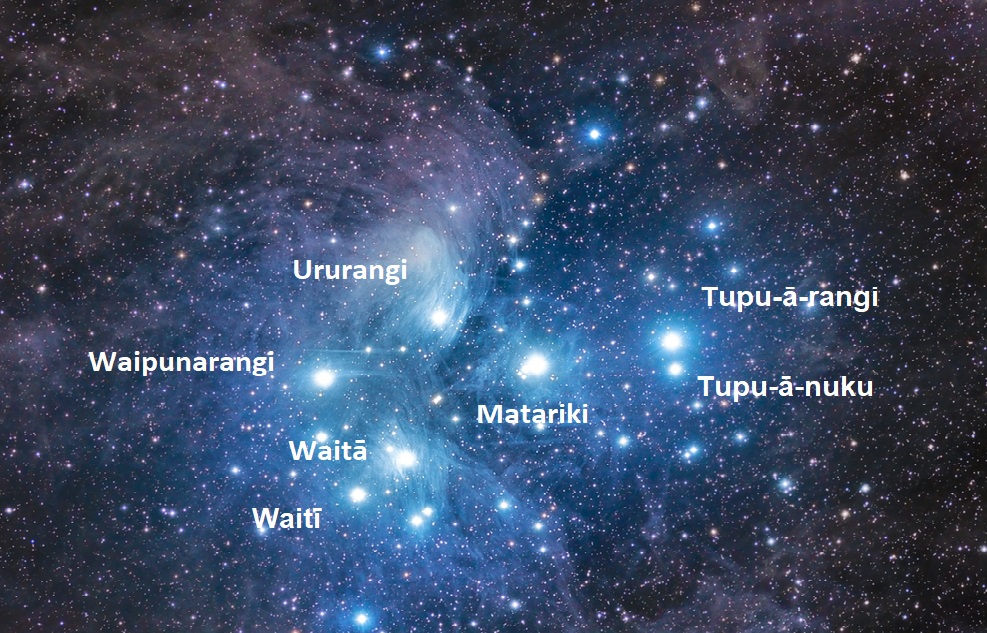 The start of the Māori New Year is signalled by the appearance in the night skies over Aotearoa/New Zealand of a group of seven stars, known as Matariki. They are also known elsewhere as the Pleiades cluster, which contains about 500 stars. However, only six or seven can be seen by the naked eye.
The start of the Māori New Year is signalled by the appearance in the night skies over Aotearoa/New Zealand of a group of seven stars, known as Matariki. They are also known elsewhere as the Pleiades cluster, which contains about 500 stars. However, only six or seven can be seen by the naked eye.
Different iwi celebrate Matariki at different times. Some celebrate immediately it rises in late May or early June, while others wait until the next full moon or the dawn of the next new moon. Some begin the new year with the rising of Puanga/Puaka (Rigel, a blue supergiant star in the constellation of Orion).
Matariki is a time to celebrate new life, while remembering those who have passed. Many plan for the future, including preparing the ground for the new year. Whānau and friends gather to enjoy kai, waiata, tākaro and haka. Importantly, it is also a time to pass on to the young the lore of the land and forest and the wisdom of the elders.
Again, the descriptions of Matariki, the cluster, vary from iwi to iwi. Some say that Matariki is a male star but several say that the stars are a mother and her six daughters. Matariki is the mother star and her daughters are Tupu-ā-nuku, Tupu-ā-rangi, Waipunarangi, Waitī, Waitā, and Ururangi. You can read more about this from the following sources:
- Matariki - Te Taura Whiri i te Reo Māori/ Māori Language Commission. This booklet is in both te reo and English is a guide to Matariki – its origins and significance.
- Matariki and the six sisters - by Ngāti Toa Rangatira. Te Papa’s iwi in residence is Ngāti Toa Rangatira. This story is retold by kaumātua (elder) Te Waari Carkeek.



